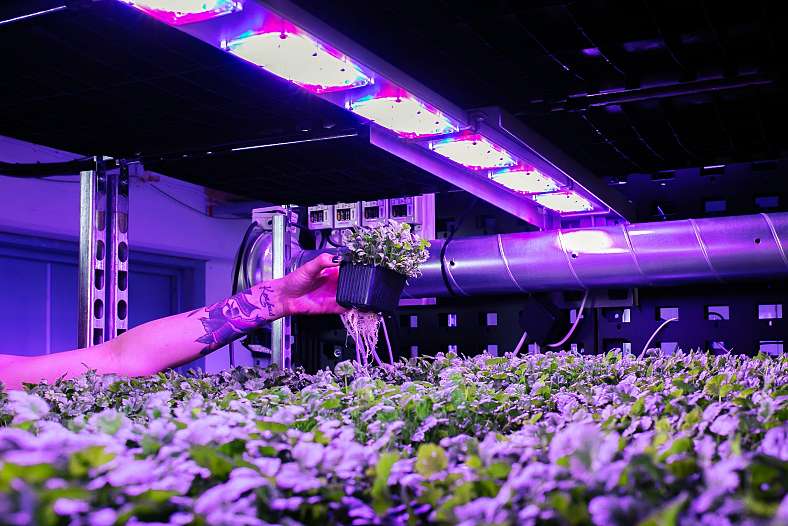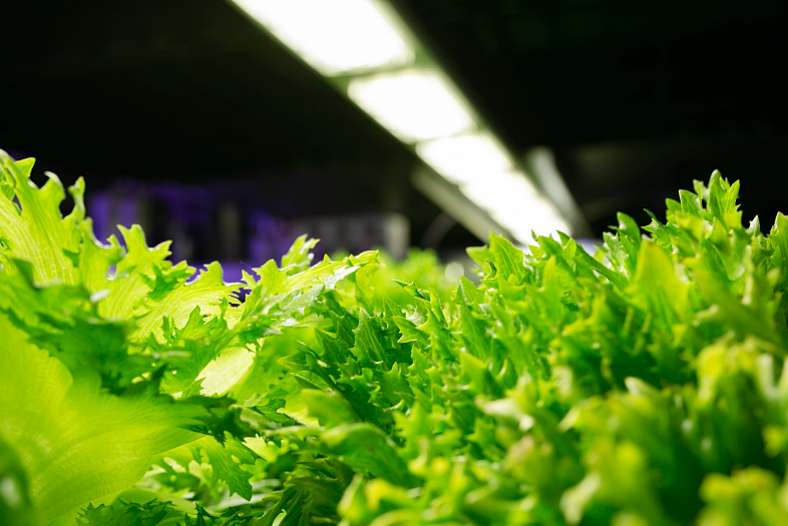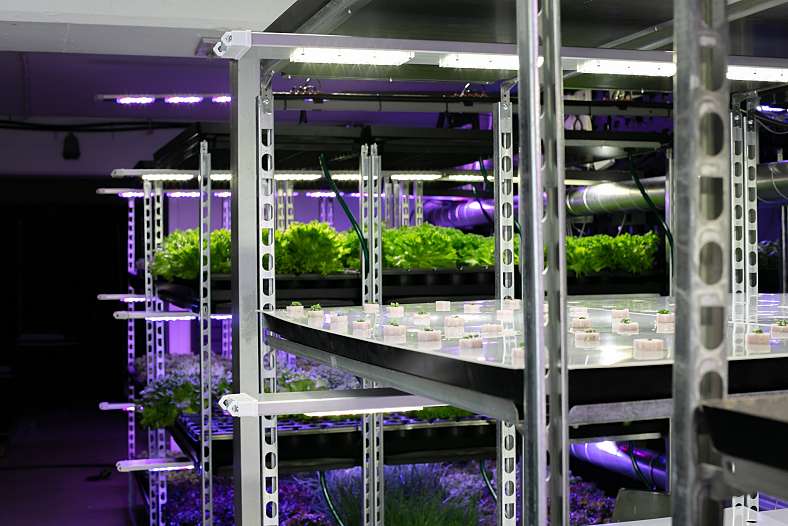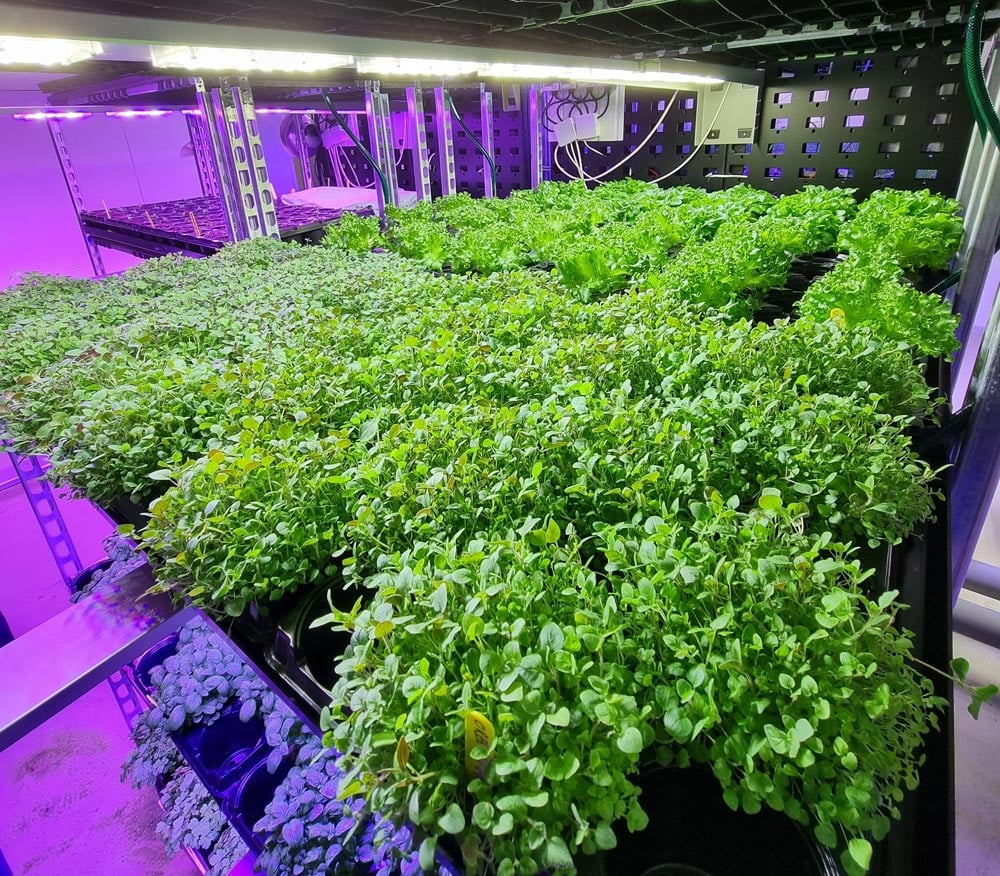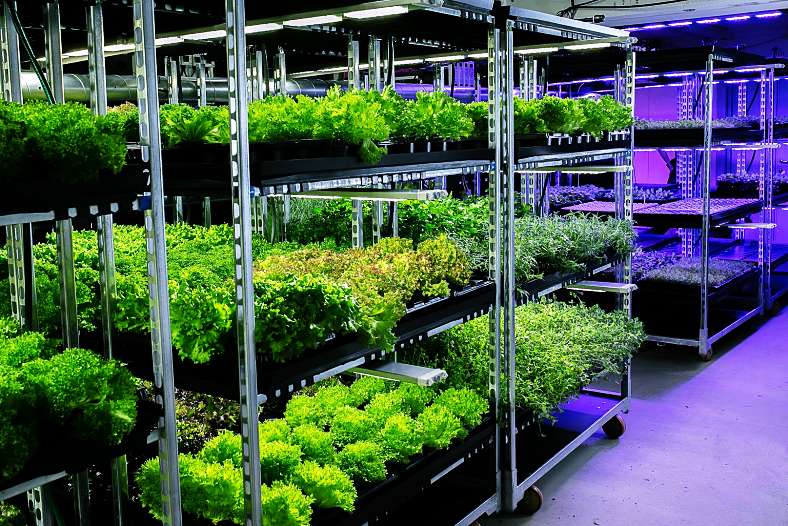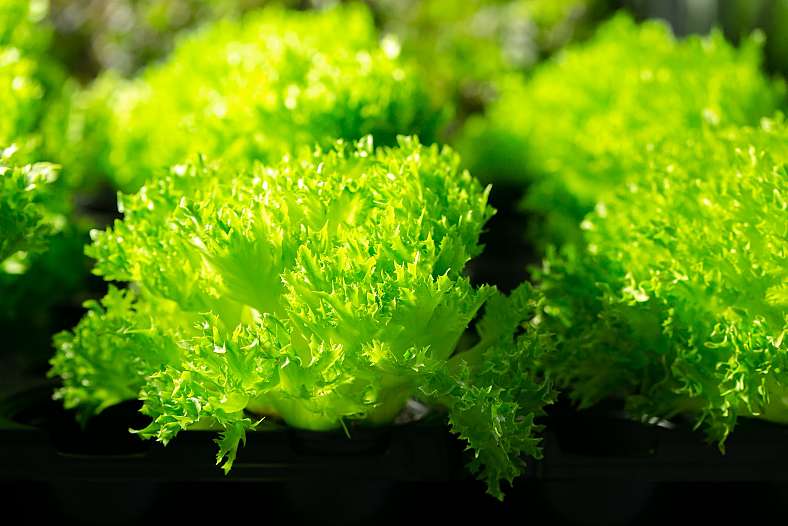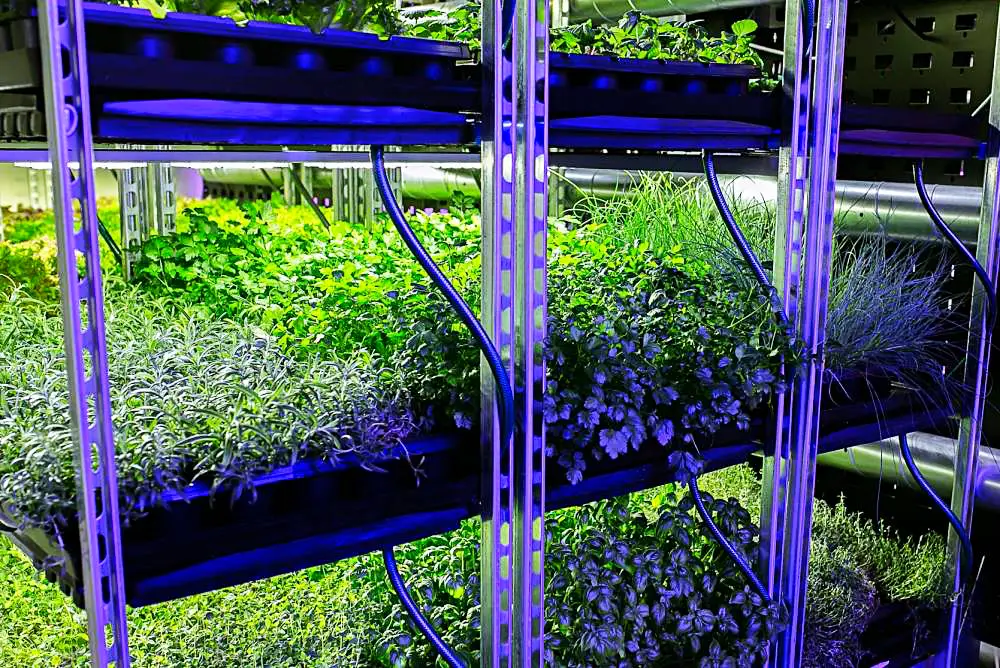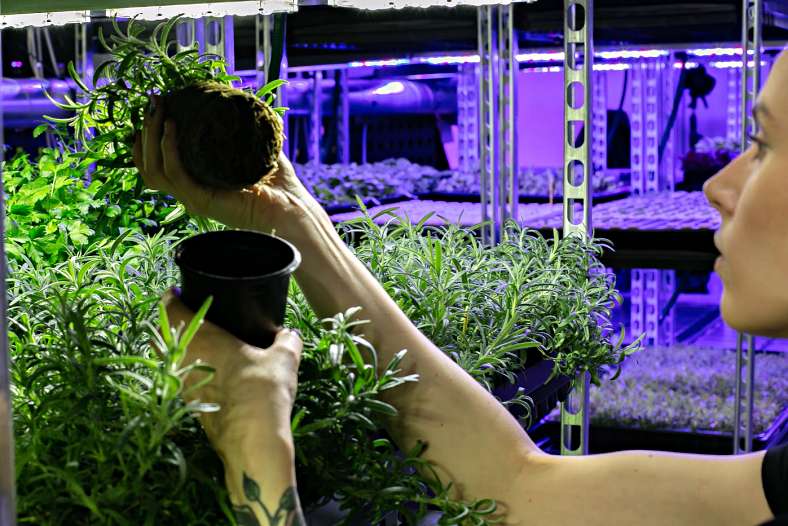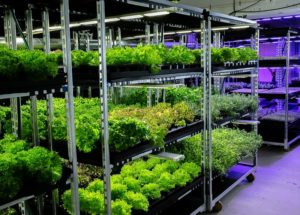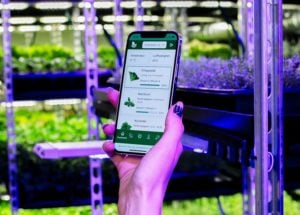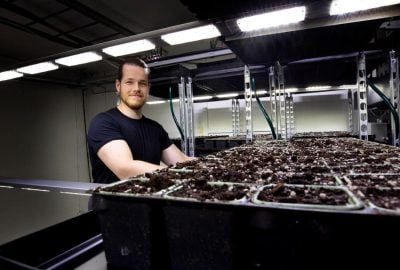The idea of vertical farming might have started as an idealist dream, but then plant science turned it to profit. So let’s find out more about the technologies and strategies that made indoor farming the venture of a lifetime.
Before discussing the profitability of vertical farming, let’s consider the humanist ideals that shaped the business. One of the biggest selling points of vertical farming is its implementation of green solutions in the food industry.
Therefore, even though this article is about making revenue from vertical agriculture, we should acknowledge that sustainable food production is an integral part of its earning potential.
The global population is estimated to reach 9 billion by 2050. This will put enormous strain on our natural resources. Indoor agriculture can be performed anywhere, and the required resources are minuscule compared to conventional farming. Vertical farming promotes less food transport, fewer emissions, and better use of space and water. On top of that, it allows us to grow healthier and tastier produce. (Source: U.S. Department of Agriculture)
Sustainable profit is the future
It’s not coincidental that tech giants like Microsoft Research or Google invest in vertical farming. They have long since realized its potential, not just for turning a profit but for making a better tomorrow.
Microsoft’s lead researcher on indoor framing is Ken Tran. He develops AI for indoor agriculture. Tran believes it offers a solution to our increasing environmental problems. Check out our article about research on vertical farming to learn more about Ken Tran’s work.
With that said, let’s change pace and consider the profitability of vertical farming. The earning potential of vertical agriculture is, after all, the key to implementing its sustainable solutions.
Without profitability, indoor agriculture would forever remain a pet project in hipster backyards. As it turns out, though, it has excellent earning potential. This is what you need to know about turning vertical farming into a viable business.
Contents
- How does vertical farming outdo conventional farming?
- Strategic missteps that’ll hinder indoor farming progress
- The biggest challenges in vertical farming
- What does it take to profit from vertical agriculture?
How does vertical farming outdo conventional farming?
There are many advantages to vertical farming, especially in areas with challenging weather conditions. Indoor agriculture isn’t dependent on warm and sunny weather. You can cultivate vertical crops all year round, and its results are much more predictable than in conventional farming. Salads and herbs have 12 annual growth cycles. Microgreens can be grown 36 times a year.
Another massive advantage of vertical farming is the minimal issues with pests and plant diseases. Indoor plant growth is naturally sheltered from these problems. This allows vertical farmers to focus on their plant growth’s taste and nutritional value.
Computerized systems and software for vertical farming have thoroughly digitalized plant growth. The possibilities for optimization and accurate replication result in better plant growth and fewer resources spent. In essence, the vertical farming of today is developing our future farming solutions.
Related article: Vertical farming vs. traditional farming
Avisomo guides you to vertical farming profits
Considering all these advantages, the potential for economizing plant growth is as clear as day. Vertical farming requires no arable land, no chemicals, and no heavy machinery. Vertical farming turns a profit with minimal workforce and reduces water consumption by as much as 90 percent compared to conventional agriculture.
It almost sounds too good to be true, but then again, we’re talking about the ups of vertical farming as opposed to conventional farming. This is not to say that the road towards vertical farming profit is without obstacles, one of which is the high startup cost.
But fret not; Avisomo is here to help. We don’t want you to put all your eggs in one basket. Instead, we encourage you to get acquainted with vertical farming at your own pace.
So how do we help startups? Well, we are proud to offer Avisomo’s vertical farming system. In essence, we’re designing solutions that allow you to start as big or as small as you want. And to toot our own horn just a little bit, we believe our system is among the most efficient ones in the world.

Strategic missteps that’ll hinder indoor farming progress
Success in vertical farming depends on good startup planning. Many vertical farmers have struggled to get their business off the ground because they neglected to consider one or several of the following points in the planning phase:
1. Location
The most important thing for a vertical farm startup is to find the perfect location. To find such a place, you need to ask yourself two key questions. What do you plan to grow, and for whom will you be growing these plants? If demand for the product is lacking in your area, it is probably not a well-suited location for profitability. Remember, vertical farms can operate anywhere. Take advantage of this opportunity and seek out a site with substantial demand.
2. Building
Once the location is decided, you should find a building that suits your needs. If you choose your premise wisely, it will save you much headache down the road. For instance, you want a proper layout for power and water. Indoor farming comes with substantial power needs, and irrigation must be well-functioning. In addition, it is wise to choose a large enough building to expand production considerably.
Related article: How to reduce vertical farming energy consumption?
3. Distribution
When picking your location and building, you should consider logistics as well. Sales are an essential part of the venture, and the products must be distributed as efficiently as possible. Think about who your target customers are. What kind of delivery suits them best, and how will you handle the transport from the vertical farm to customers or wholesalers?
4. Pricing
Lastly, all vertical farming startups should consider their pricing strategy. It’s an easy mistake to think that you should aim at undercutting the current prices in the market. Considering the quality of your plants, this will underprice your products and make it much harder to earn a profit.
Vertical farmers need to take advantage of their strengths to stay ahead. Of course, as we will soon cover in the next chapter, there are severe costs to consider, but the production methods also come with substantial advantages. For instance, it allows you to guarantee chemical-free, locally produced, fresh plants with higher nutritional values than your competitors.
These guarantees have tremendous value since people are willing to pay for them. As a vertical farmer, you must take advantage of the technology available and make sure that your customers know that you’re doing so. The quality of your plants speaks for itself; the guarantees you can give allow for higher pricing than other plant producers.
The biggest challenges in vertical farming
More obstacles await once the strategizing is done. New vertical farmers will find it a slippery slope when learning the ropes of pollination, irrigation, lighting, ventilation, harvesting, and computer system surveillance. Then, there’s customer outreach, transport, and sales to worry about. The rumors are true: Vertical farms can grow more plants with fewer workers, but the danger of human error is still present, especially in the startup phase.
Imagine that you have planned a perfect startup. The location and building are ideal for vertical farming. Everything is done by the book, and the local community craves fresh produce.
Then, suddenly, you realize that the startup and daily production cost more than you make, and your investment savings are running low. On top of that, another vertical farm just opened a few blocks down the road, and they have the latest equipment on the market. Even worse, you struggle to get a good foothold in the market because you didn’t foresee some local government regulations that you have to circumvent.
In other words, there are many obstacles to be aware of when starting a vertical farm. You might not have to traverse the same hurdles as conventional farmers, but new ventures come with new challenges.
Main obstacles in the way of vertical farming profits:
- The startup costs were higher than expected
- The daily production costs are higher than expected
- The demands for industry know-how were higher than expected
- The road to market (access) was bumpier than expected
- Limited plant selection
- Plant optimization takes time
- Vertical farming is not immune to pests and plant disease
To find out more, check out our article about the biggest challenges in vertical farming.
The skeptics of vertical agriculture tend to highlight the startup cost and power bill as the main issues of concern. They are not wrong, but at the same time, it is important to remember that the startup cost is a one-time expense.
After that, when the vertical farm is set up, the plant production will run smoothly at a low cost. The monthly fee will never come close to the costs of conventional farming.
Not to sound like a broken record, but this is an Avisomo article, and our expertise is vertical farm rental. We aim to get more startups off the ground by limiting the startup cost to a bare minimum.
This means that you can start a tiny vertical farm and learn the ins and out of the industry without taking out a second mortgage on your house. Then, when you begin to get the hang of it, you can think about how you’ll turn your tiny vertical farm into a viable livelihood or even a full-fledged plant factory.

What does it take to profit from vertical farming?
The safest way to profit from vertical farming is to avoid the issues discussed in this article. Before starting a vertical farm, a plant production plan needs to be in place. This plan must list your plant selection, farming location, customer base, plant growth systems, marketing strategy, and finally, how to turn a profit on this venture.
Do you remember Ken Tran, the lead scientist at Microsoft Research? He thinks ahead, and he’s thinking big. We all stand to learn a thing or two from him. Tran believes that we’ll fit future apartment complexes with in-house vertical farms. He also believes that fresh produce, harvested only hours ago, will be delivered to your doorstep like the pizza delivery of today. The technology is getting there, but you still have time to invest before the vertical farming revolution becomes the center of all investors’ attention.
To fully understand what it takes to profit from vertical farming, it is helpful to look at those who have already turned it into a successful business. Japan, for instance, is one of the foremost innovators of indoor farming. More than 200 Japanese companies make great profits on large-scale vertical farming. One of these companies is called Spread.
How Spread turns a massive profit from vertical farming
Spread has been a successful vertical farming company since 2013, and they keep increasing their profits. By examining its own business model, Spread has identified five features that are integral to the company’s success:
- Large scale operation
- Well cooperating production, development, logistics, and sales
- Good synergy between the harvesting team and the transport department
- Optimized plant growth
- Branding and marketing in line with market demands
Spread thinks the second point is crucial for their success. Furthermore, they explain that their successful cooperative efforts stem from a combination of large-scale production and customized logistics for all market segments. Spread also emphasize the importance of dedicating ample resources to marketing and sales.
Spread is dealing on a scale that most vertical farmers can only dream about. They sell produce from vertical plant factories to more than 4000 stores in Japan. Still, there is a lot to learn from Spread’s business formula for vertical farming startups. Making the best use of resources is equally important, if not more so when your company fights for survival.
Related article: Why is CEA growing so fast? (Controlled-environment agriculture)
Conclusion
It’s easy to get caught up in the plant growth itself or the vertical farming technology. These things are important, but startup stumbles are extra vexing when caused by overlooked factors such as transport or marketing.
Remember that the know-how you gain when learning the ropes of optimized plant production gives a better return on investment with an appropriate pricing strategy. In the meanwhile, try not to lose sight of the big picture. The demand for superior plant growth will never go away.
Next: Stable income from vertical farming starts with a well-laid-out business plan, and we happen to have made one for you: Example of a business plan for vertical farms. (Coming soon)
Resources
CambridgeHOK: Should I invest in vertical farming?
Crumpacker, Mark: What Are the Keys to Success for Vertical Farms?
Microsoft: Indoor vertical farming in Asia and beyond: Digging deep in data
Spread: Business Strategy: The Potential of Vertical Farm


